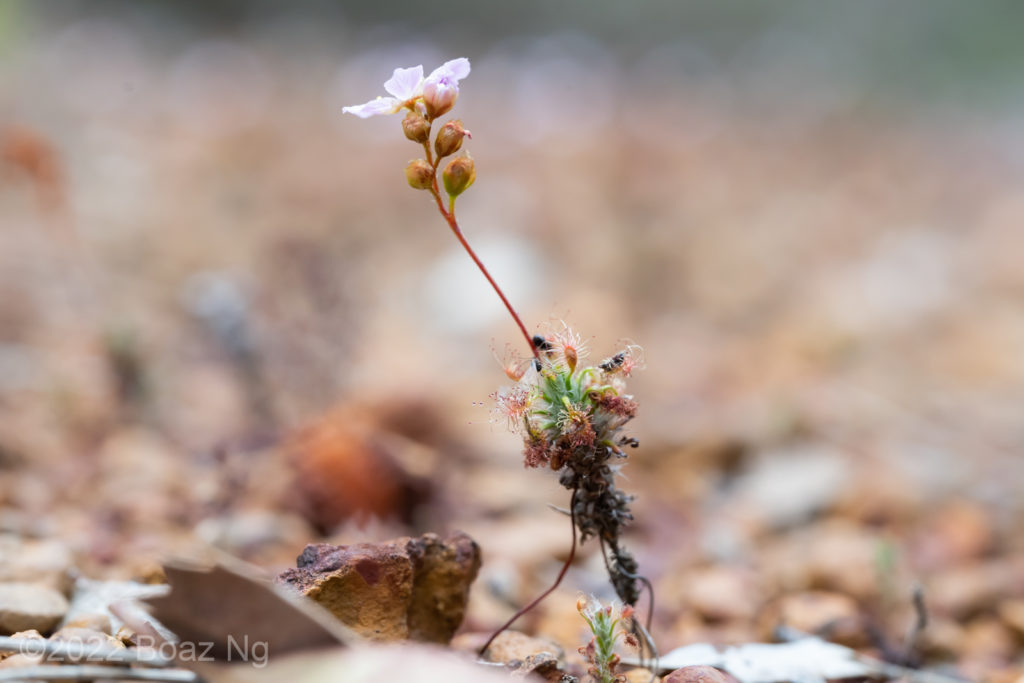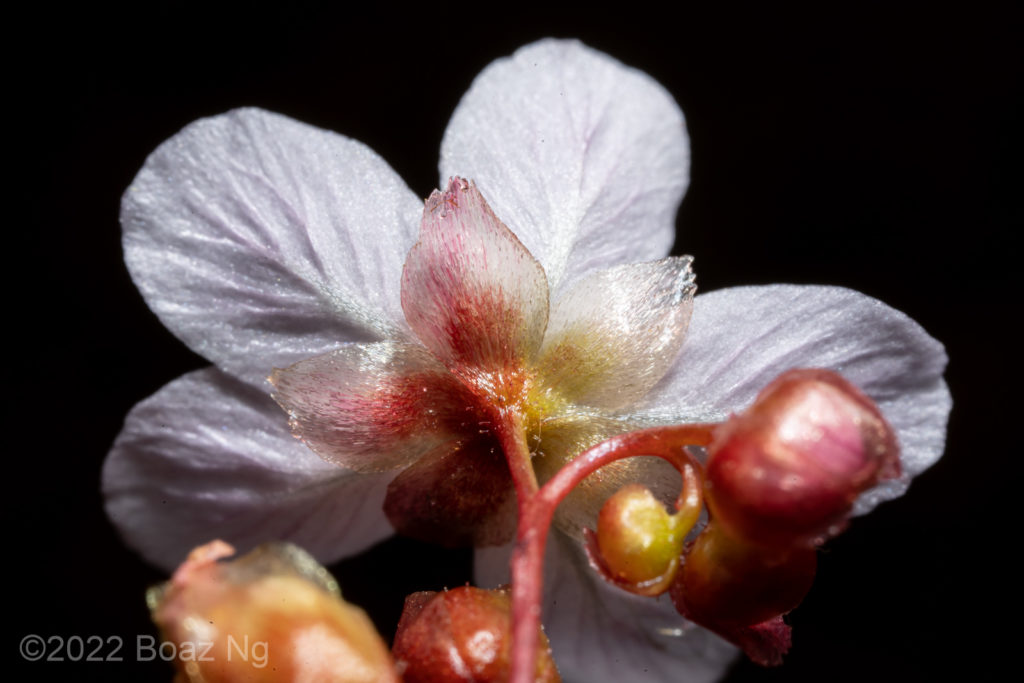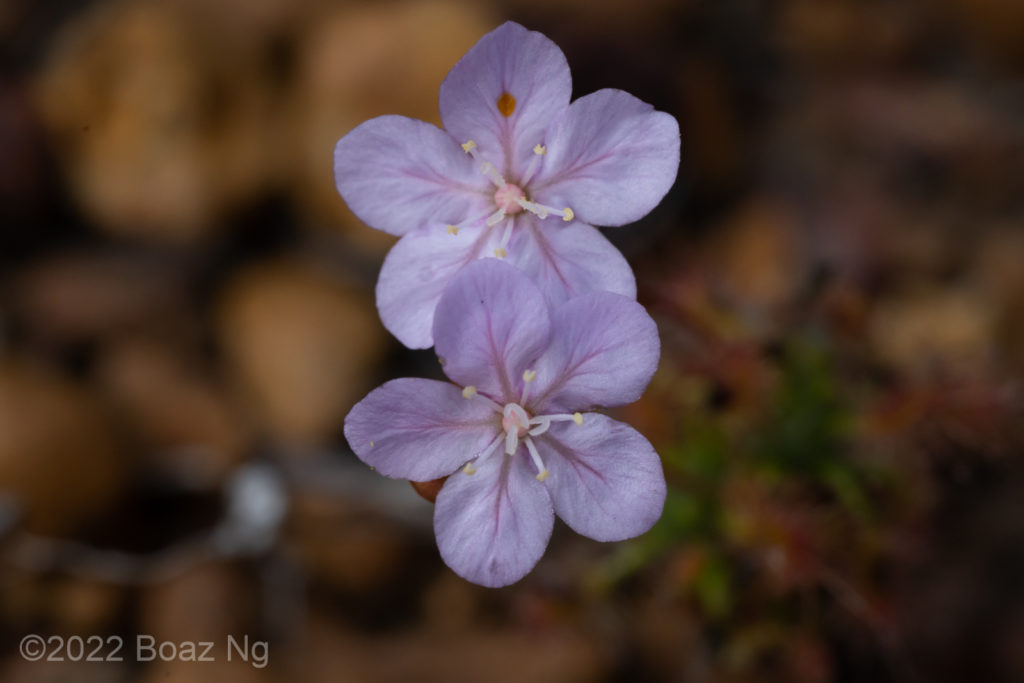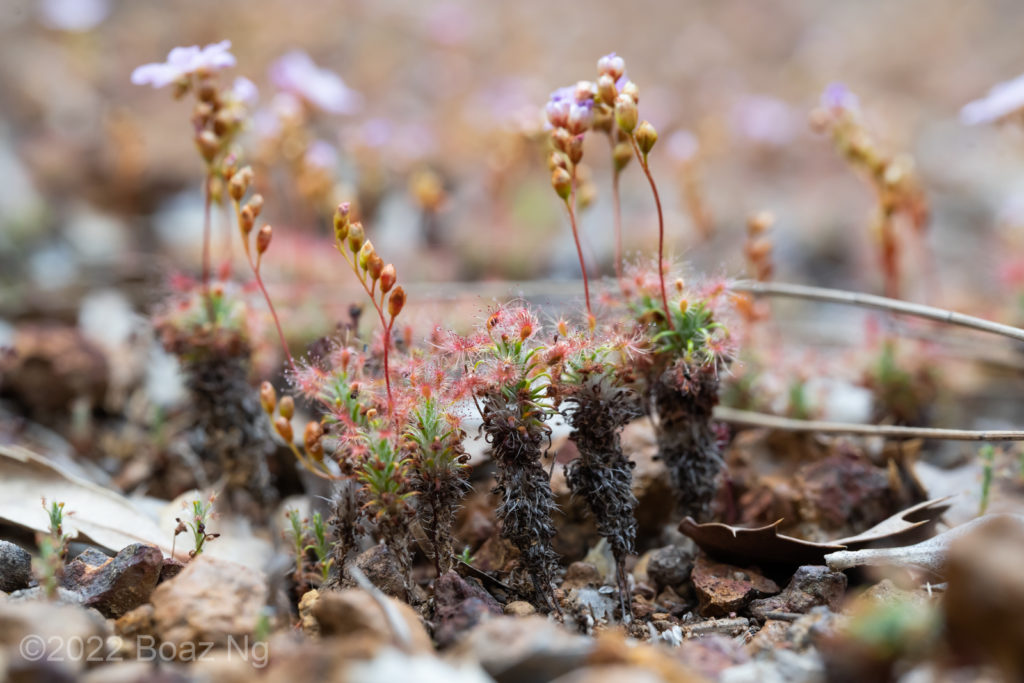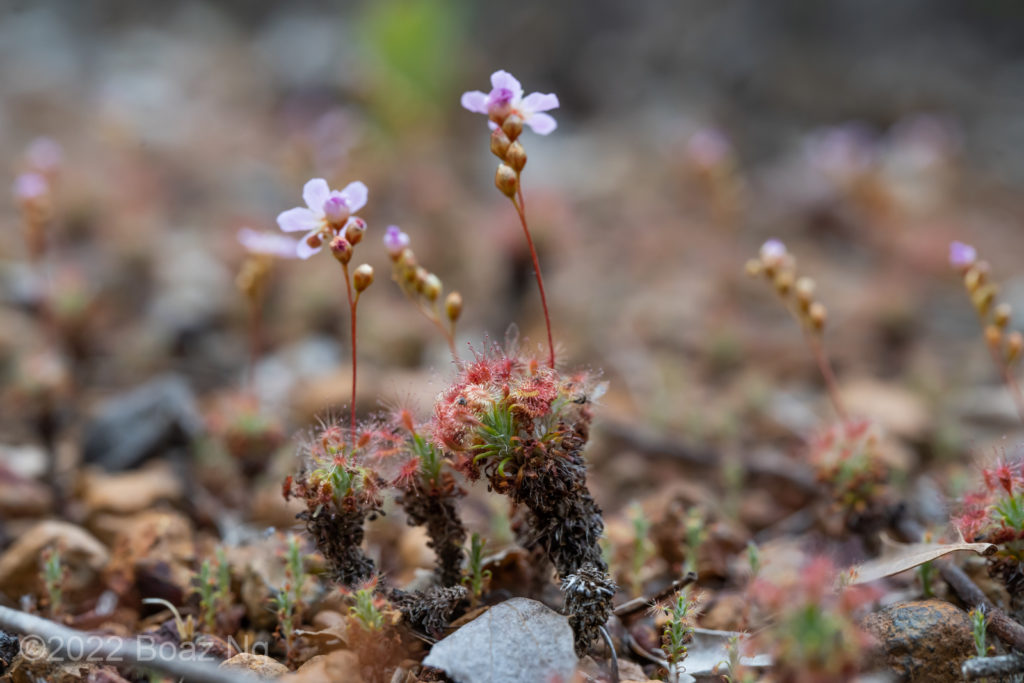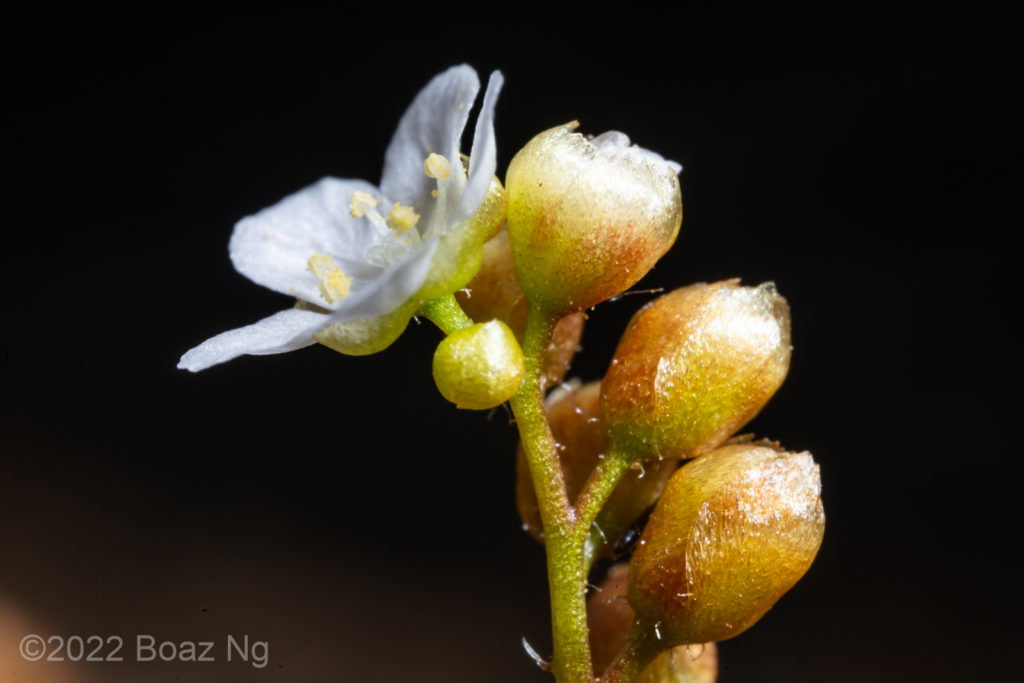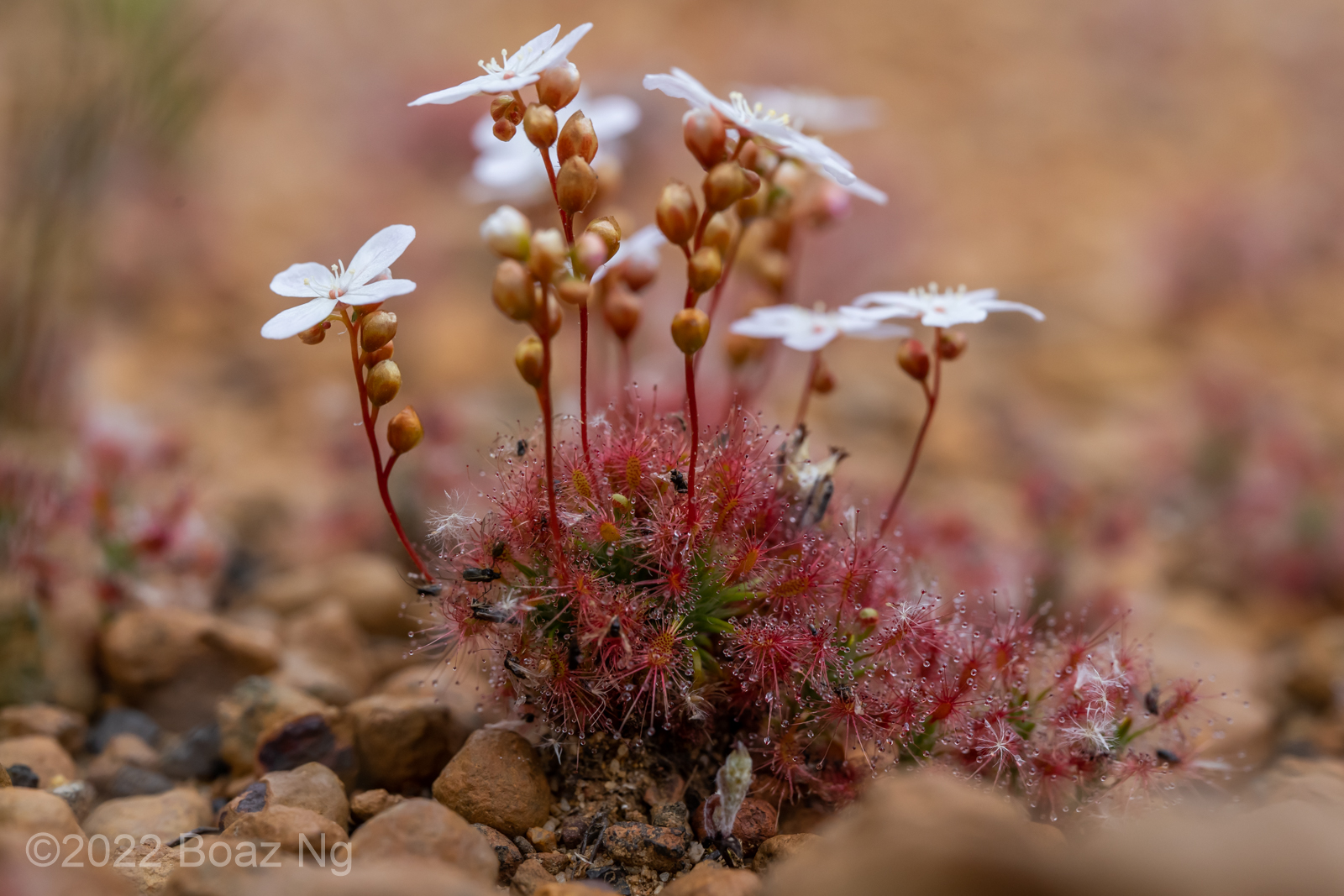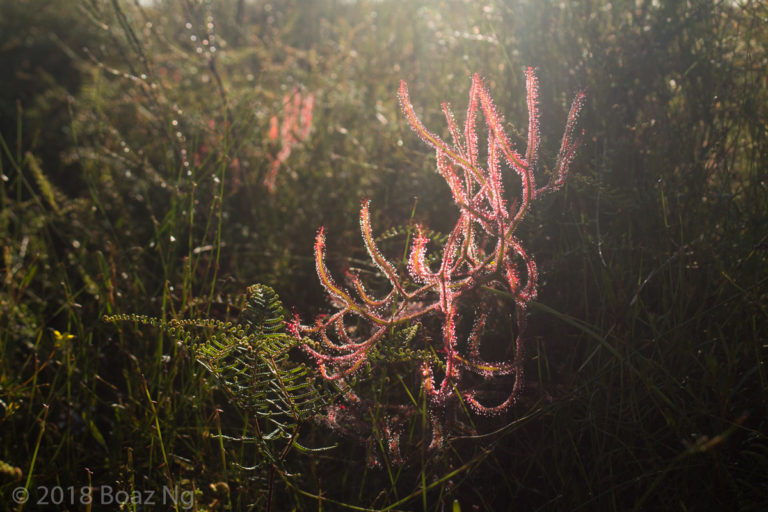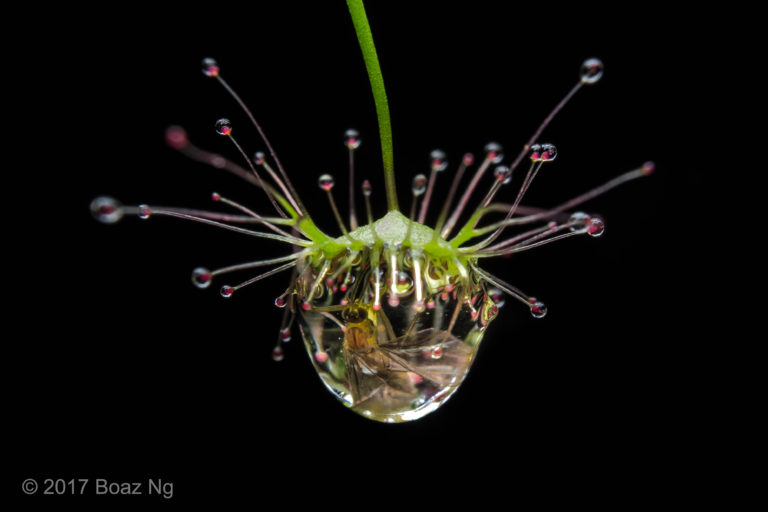Drosera dichrosepala is a pygmy sundew named for its two coloured sepals. It is endemic to a small area near Katanning in Western Australia where it grows on accumulations of laterite.
Drosera dichrosepala is a small sundew with a rosette about 1.5 cm in diameter. The petioles are long and sprawl outwards and downwards, curving up at the laminae to raise the ends of the leaves upwards. The laminae are elongated and oval-shaped. The active rosette is raised on a stem of accumulated old growth in older plants. The stem can reach substantial lengths if the plants are in sheltered positions such as under bushes. The flower stalk is mostly smooth with a few scattered glands. The flowers are white or pink. The petals are broad with a rounded edge, with an obvious sunken vein in the centre. There are three styles which are cylindrical and curved inwards. The sepals are glabrous and often coloured both red and green.
The species grows in well-drained accumulations of laterite near Katanning where it grows amongst low scrub. The species comes to bloom in mid-spring and goes dormant over summer.
Drosera verrucata was previously misidentified as Drosera dichrosepala prior to its rediscovery by Lowrie, and remains mislabelled in many collections. Drosera dichrosepala is easily distinguished by flowers, which have broader, rounded petals (those of D. verrucata are distinctively narrow).
The species is superficially similar to other pygmy sundews with raised rosettes. It is distinguished by its almost glabrous stems (D. scorpioides has long woolly hairs, D. lasiantha has short glandular hairs, D. gibsonii has a dense covering of glands).
